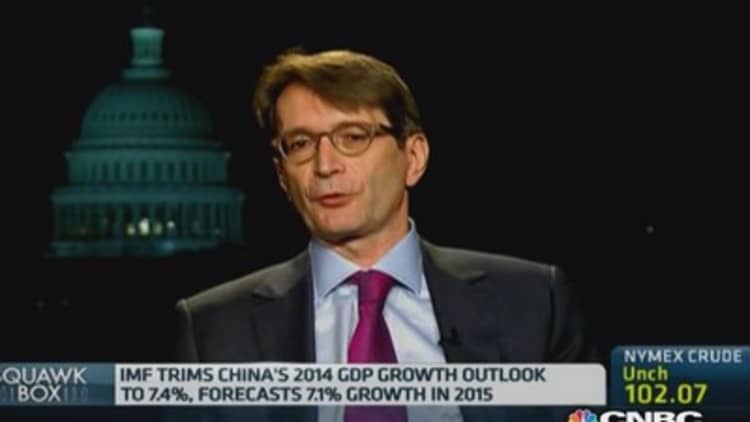With companies in Asia slowing their capital investment, the region may face a deceleration in economic growth ahead, HSBC said.
"Despite record low funding costs and, in many places, unparalleled profits, firms are often prone to hoarding cash rather than investing it," Frederic Neumann, an economist at HSBC, said in a recent note.
"Growth pessimism" may be at least partly to blame, he said. "If firms suspect that demand in the East and the West will not accelerate appreciably, why take the risk and boost capex?" Neumann said. "The trouble with this is that it kicks off a self-feeding cycle: without more investment, growth will not pick up, and with demand disappointing, capital spending languishes."
Read MoreIMF cuts global growth outlook as US recovery falters
Only three periods in the past two decades have had capital spending growth as weak as it is now: the Asian financial crisis, the tech slump and the global financial crisis, Neumann said. In most Asian countries, capex as a share of gross domestic product (GDP) has fallen since 2000, he said.
He noted that GDP growth and capital expenditure growth are closely correlated in emerging Asia, and that over the last few years, spending hasn't slowed significantly more than the overall economic growth slowdown.
"Still, judging from the generally depressed pace of capex growth, firms don't seem to have much faith that demand will soon accelerate," he said.
Read MoreGet used to slow growth, spotty world economy: CEO
To be sure, not everyone is pessimistic about the growth outlook within Asia.
"Asia has run at a low-6 percent clip for the past three years with little or no help from the U.S., Europe and Japan," David Carbon, an economist at DBS, said in a note Friday.

The region is growing its exports at an around 5 percent annual rate, mostly due to intra-regional trade and around 3-4 percent export growth to the U.S. as penetration into markets there increases, he said.
Read MoreGlobal economy starts second half on solid footing: PMIs
"Hopes for faster export growth than this will have to wait for a stronger global recovery," Carbon said. "Given the U.S. is likely to grow less this year than last year, and Europe is fading once again, that could be a while."
Carbon doesn't believe the reforms under Japan's Prime Minister Shinzo Abe, dubbed Abenomics, have translated yet into concrete benefits for the rest of the region, with Asia ex-Japan exports to Japan running sideways at best.
Read MoreDeveloping Asia set for steady growth in 2014: ADB
But even without any tailwind from the U.S., Europe and Japan, "at this rate Asia adds a Germany to the world's economic map every 3.5 years," he said.
—By CNBC.Com's Leslie Shaffer; Follow her on Twitter @LeslieShaffer1

